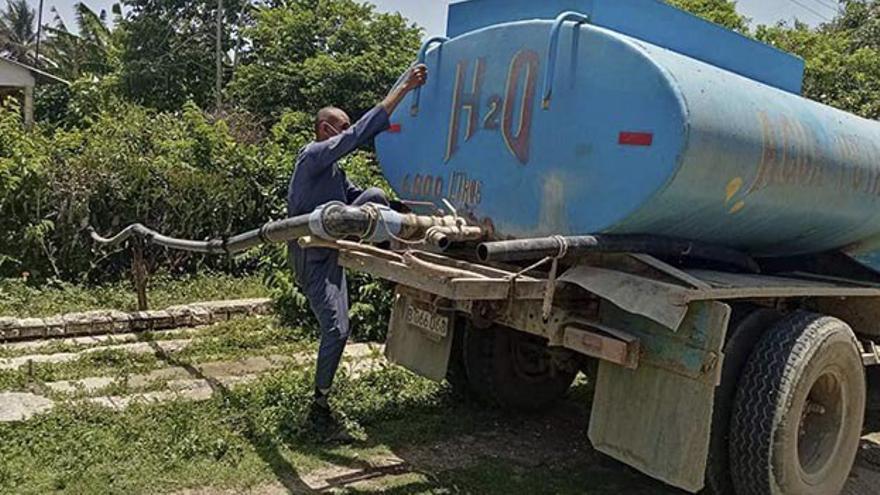
![]() 14ymedio, Havana, 15 September 2022 — Some 100,000 inhabitants of the province of Las Tunas face a severe drought. The water deficit affects 450 communities, especially the municipality of Manatí, which is located in the northwest of the area.
14ymedio, Havana, 15 September 2022 — Some 100,000 inhabitants of the province of Las Tunas face a severe drought. The water deficit affects 450 communities, especially the municipality of Manatí, which is located in the northwest of the area.
Faced with this situation, the inhabitants have had to be supplied with tanker trucks sent by the Provincial Directorate of Communal Services. Jorge Luis Cruz Cuello, spokesman for the institution, told Periodico26 that in the urban area alone, the lack of water limits them to filling 7 to 10 tanks a day, instead of the 30 required to cover the basic needs of the inhabitants.
Every day, he said, 27 tank shipments are held for Las Tunas with 130 teams contracted to cooperatives and state organizations. Railway line workers have also been called on to transport water by train to 31 towns in the municipalities of Puerto Padre and Manatí.
The supply is delivered two or three times a month, to cover areas up to 60 miles away. To make it all more complicated, this depends on the availability of fuel, which is increasingly scarce at this time.
Cruz Cuello said that in the communities of the province that don’t have aqueduct service, they can only manage to supply water every 15 or 16 days.
Las Tunas is one of the driest provinces in Cuba, and the rains don’t usually fill the basins and reservoirs. A 2017 article published in the Caribbean Journal of Social Sciences revealed that since 1960, there have been 20 cycles of rainfall deficit in the area, which has harmed agriculture and livestock.
About 75 miles from the city of Las Tunas, the Camagüey reservoirs, the largest in Cuba, were below their historical average on September 5.
The Cuban News Agency reported that the reservoirs of this province stored 42.3% of a capacity of a little over 135 billion gallons of water. Five of those destined for the water supply of the population were more than half full, and in seven the water didn’t reach 50%.
In March of this year, some 400,000 Cubans had no water due to a severe drought that mainly affected the provinces of Guantánamo, Santiago de Cuba, Holguín, Camagüey, Havana and Las Tunas. At that time, the National Institute of Hydraulic Resources predicted that the rains would be below average until May.
Translated by Regina Anavy
____________
COLLABORATE WITH OUR WORK: The 14ymedio team is committed to practicing serious journalism that reflects Cuba’s reality in all its depth. Thank you for joining us on this long journey. We invite you to continue supporting us by becoming a member of 14ymedio now. Together we can continue transforming journalism in Cuba.
